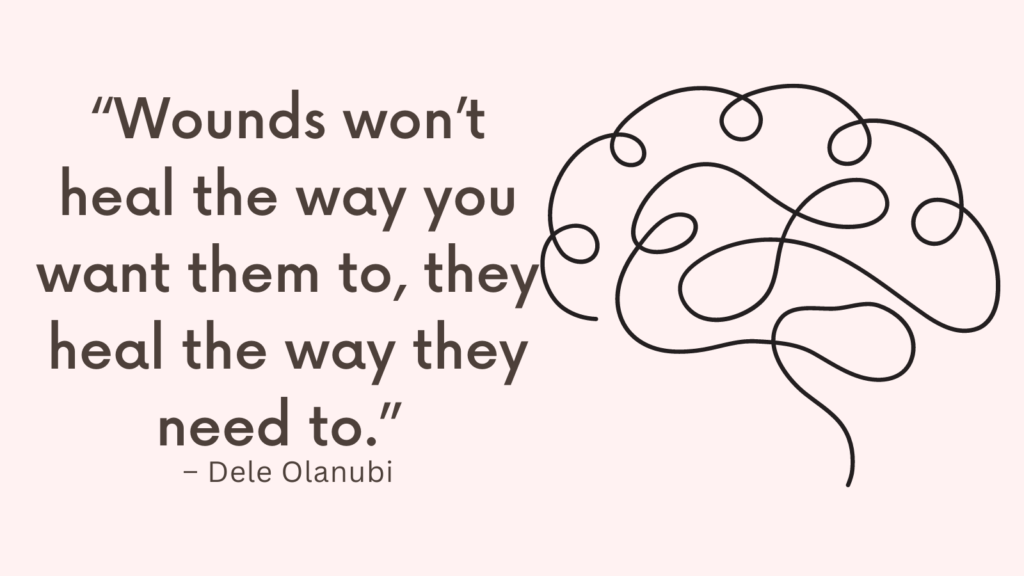Why do I cry when I talk about my feelings? Read on to find out.
Why Do I Cry When I Talk About My Feelings?
Here are some possible explanations:
1. Emotional Expression
Crying is an essential form of emotional expression.
When we speak about our feelings, especially when they are intense or overwhelming, it can trigger a physical release through tears.
2. Emotional Release
Crying can provide a cathartic release of pent-up emotions.
It allows us to let go of emotional tension or pain that has been building up inside.
Tears can provide a temporary relief and serve as a way to release built-up stress.
3. Childhood Conditioning
Our childhood experiences and socialization also play a role in how we express and perceive emotions.
If crying was encouraged or accepted as a valid emotional response during our formative years, we may continue to associate it with expressing ourselves authentically.
4. Cultural and Gender Factors
Societal and cultural norms can influence how we perceive and express emotions.
Some cultures may encourage the expression of emotions, including crying, as a means of communication and connecting with others.
Additionally, gender roles and expectations can influence how comfortable individuals feel expressing emotions, with women often being more socially permitted to cry openly.
Everyone’s emotional experiences and expressions are unique. If you find that crying during discussions about your feelings becomes overwhelming or interferes with your daily functioning, it may be beneficial to explore these reactions further with a mental health professional.
Related: How To Feel Your Feelings? Top 9 Difficult Emotions To Cope With In Healthy Ways
How to Manage Difficult Emotions?
Managing difficult emotions is essential for overall well-being. Here are some scientifically supported strategies to help you effectively navigate and manage difficult emotions:
1. Recognize and Label the Emotion
The first step in managing difficult emotions is to recognize and label what you are feeling.
This involves identifying the specific emotion(s) you are experiencing, such as anger, sadness, fear, or frustration.
Research suggests that labeling emotions can reduce their intensity and help regulate them more effectively.
2. Validate Your Emotions
Understand that it is normal and valid to experience a wide range of emotions, including negative ones.
Avoid judging or criticizing yourself for feeling a certain way.
Instead, practice self-compassion and remind yourself that it’s okay to feel what you’re feeling.
Related: Top 21 Emotional Writing Prompts To Process Emotions
3. Cognitive Restructuring
Our thoughts have a significant impact on our emotions.
Negative thinking patterns can exacerbate difficult emotions.
Cognitive restructuring involves challenging and reframing negative thoughts. Start by identifying any irrational or unhelpful thoughts associated with your emotions.
Then, question their validity and replace them with more realistic and balanced thoughts. This process can help reduce emotional distress.
The following are some prompts to help you do that:
- What evidence do I have for this thought? Is there any evidence against it?
- What would a more balanced or realistic perspective on this situation be?
- Is there another way to interpret this situation that is less negative or distressing?
- How might someone else view this situation? Would they have a different perspective?
- What advice would I give to a friend who is experiencing similar negative thoughts?
- How important will this situation be in the long run? Will it still matter a week, a month, or a year from now?
Related: Negative Core Beliefs List (& 8 Tips On How To Challenge Them)
4. Engage in Relaxation Techniques
Various relaxation techniques, such as deep breathing exercises, progressive muscle relaxation, or guided imagery, can help calm the mind and relax the body.
These techniques activate the body’s relaxation response, which counteracts the physiological effects of stress and anxiety.
5. Practice Mindfulness
Mindfulness involves paying non-judgmental attention to the present moment.
It can be helpful in managing difficult emotions by allowing you to observe your thoughts and feelings without getting caught up in them.
Regular mindfulness practice, through activities like meditation or mindful breathing, helps develop awareness and equanimity towards emotions.
Here’s a mindfulness exercise you can try:
Recognize: Begin by acknowledging and recognizing the presence of the difficult emotion. This involves naming the emotion without judgment, such as “I am feeling angry/frustrated/sad/anxious.”
Accept: Allow yourself to fully accept the emotion without attempting to change or suppress it. Remind yourself that it is normal and okay to experience a wide range of emotions.
Investigate: Take a moment to explore the physical sensations and thoughts associated with the emotion. Notice any bodily sensations (e.g., tightness in the chest, tension in the shoulders) and any thoughts or beliefs that may be contributing to the intensity of the emotion.
Non-Identification: Recognize that you are not defined by this emotion. Understand that emotions come and go, and they do not represent your entire being. Practice observing the emotion as a passing experience.
Related: Best 6 Mindfulness Exercises For Beginners (+FREE Resources)
6. Engage in Physical Activity
Engaging in regular physical activity has been shown to improve mood and emotional well-being.
Exercise releases endorphins, which are natural mood boosters.
Find an activity you enjoy, such as walking, running, dancing, or yoga, and make it a part of your routine.
7. Seek Social Support
Talking to someone supportive about your emotions and experiences can provide validation and perspective.
Reach out to trusted friends, family members, or seek support from a mental health professional.
They can offer guidance, empathy, and potential solutions to help manage difficult emotions.
8. Journaling
Writing about your emotions and experiences can be therapeutic.
It allows you to reflect on your thoughts and emotions, gain insight into their underlying causes, and find alternative ways to respond to challenging situations.
Journaling can serve as a safe outlet for expressing and processing difficult emotions.
The following are some prompts to get you started:
- What is the specific emotion I am feeling right now? How would I describe it in detail?
- What triggered or prompted this emotion? Was it a specific event, interaction, or thought?
- How does this emotion manifest in my body? Are there any physical sensations or discomfort associated with it?
- What thoughts or beliefs are connected to this emotion? Are they based on reality or distorted perceptions?
- How might this emotion be serving me in some way? Is there any hidden message or lesson behind it?
- Are there any past experiences or traumas that could be influencing my current emotional response?
- Have I experienced similar emotions in the past? If so, how did I navigate through them? What worked and what didn’t?
- Are there any patterns or recurring themes in my life that contribute to this emotion?
- What self-care strategies or coping mechanisms have helped me manage difficult emotions in the past?
- How can I show myself kindness and compassion while experiencing this emotion?
Related: Top +100 Journal Prompts For Mental Health [+Free PDF Printable!]
9. Take Care of Your Physical Health
Ensure that you prioritize self-care and maintain a healthy lifestyle.
This includes getting adequate sleep, eating balanced meals, and avoiding excessive use of alcohol or drugs.
Physical well-being plays a vital role in emotional regulation.
10. Seek Professional Help
If you find it challenging to manage difficult emotions on your own, seeking help from a psychologist or therapist can be highly beneficial.
They can provide evidence-based strategies tailored to your specific needs and assist you in developing effective coping mechanisms.

Conclusion
Managing difficult emotions is an ongoing process that requires patience and self-compassion.
Use these strategies consistently and adjust them according to your unique circumstances.
With time and practice, you can develop resilience and effectively navigate the challenges that come with difficult emotions.



